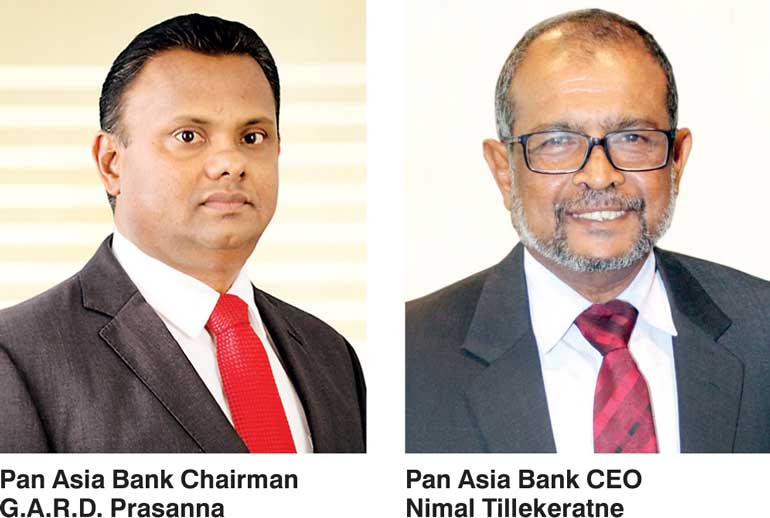Saturday Nov 29, 2025
Saturday Nov 29, 2025
Monday, 30 October 2017 00:00 - - {{hitsCtrl.values.hits}}
Pan Asia Banking Corporation PLC recorded modest performance during its third quarter as well as for the first nine months amid challenging macro economic factors including higher interest rates and slowdown in demand for new loans.

The bank posted a Rs. 1.8 billion before tax profits which translated in to Rs. 918.1 million after tax profit for the nine months ended 30 September 2017 or Rs. 2.91 a share in comparison to the Rs. 905.8 million reported for the corresponding period in 2016.
For the July-September quarter, the profit remained almost unchanged at Rs. 301.3 million from the same period last year as the higher credit costs pared the potential gains.
The interim results released to the Colombo Stock Exchange showed the other income led by fees and commissions cushioning much of the earnings as the core banking performance moderated amid rising cost of funds and relatively slow demand for new loans.
The net interest income for the 9 months rose by 8.0% to Rs. 3.67 billion from a year earlier as the rise in interest cost beat the rise in interest income.
The net interest margin or the gap between the cost of its deposits and other funds and the yield of its loans and other investments was tad weaker at 3.81% against 3.87% at the beginning of the year, albeit remaining above the industry average.
The bank gave Rs. 4.8 billion in new loans and receivables during the period nudging the bank’s total loans and receivables book to surpass Rs. 100 billion to end the period with a total book of Rs. 103.3 billion.
The growth in loans almost corresponded with the rise in deposits as the new deposits too rose by Rs.4.1 billion.
Bank’s total deposits which was at Rs.95.63 billion by the end of September is now flirting the Rs. 100 billion mark, another key milestone for the bank which is within the reach of the bank before the end of the financial year.
In March 2017, the bank raised Rs. 2.1 billion fresh equity via a rights issue placing the bank’s capital adequacy requirements well above the minimum requirements under the new BASEL III rules.
As of September end, the bank’s both Common Equity Tier I (CET I) and the Tier I was 10.56% against the regulatory minimums of 5.75% and 7.25% respectively.
Meanwhile the total capital adequacy ratio or the Tier II ratio was 13.1% whereas the minimum required is 11.25%.
Pan Asia Bank Director/Chief Executive Nimal Tillekeratne said: “I consider this year as well as the next as ‘re-set’ years which will lay a stronger foundation for a sustainable and a durable growth in the medium to long term.”
The bank is currently undergoing an overhaul in areas such as credit underwriting, risk management, operations, information technology, human resources and its network expansion strategy under Tillekeratne’s fresh leadership.